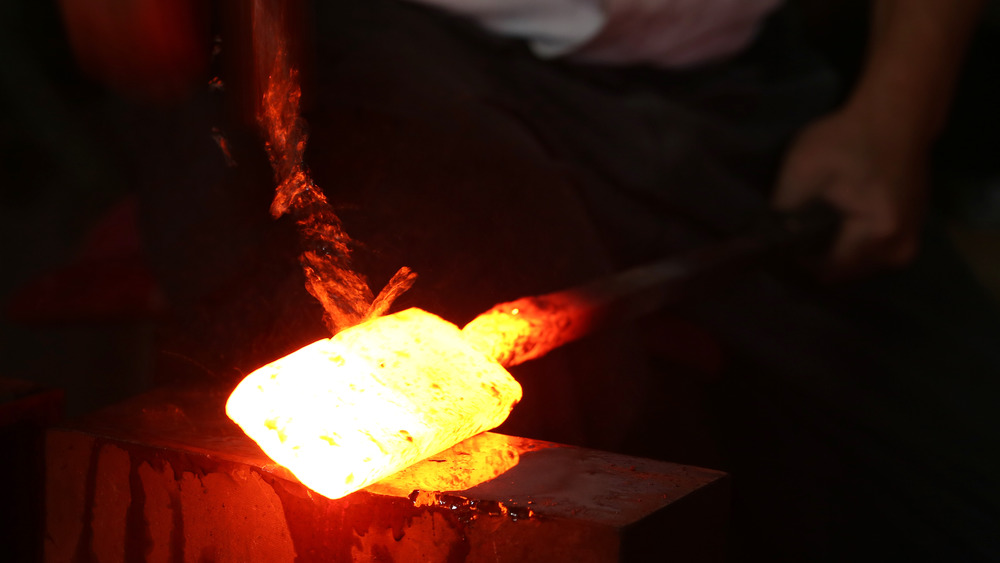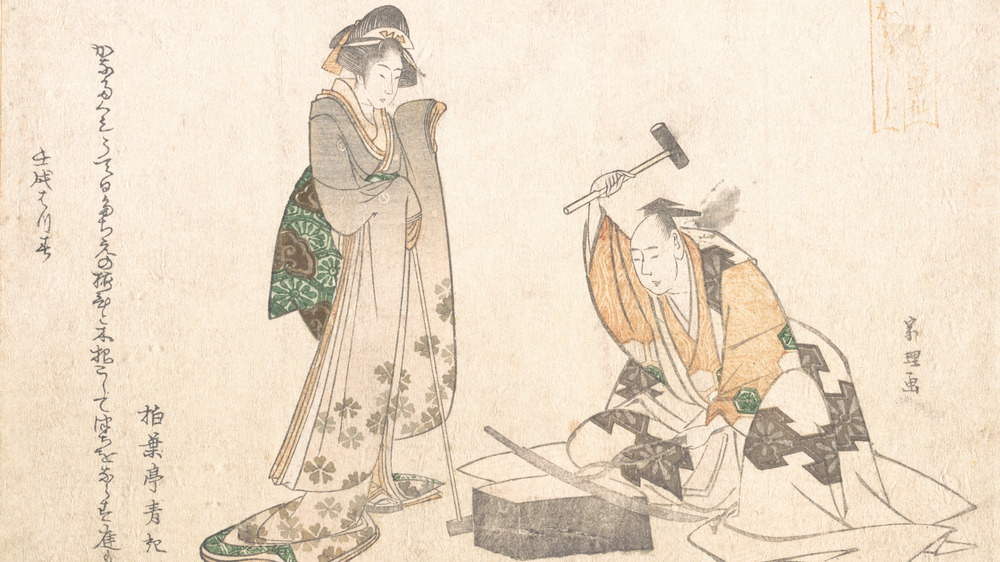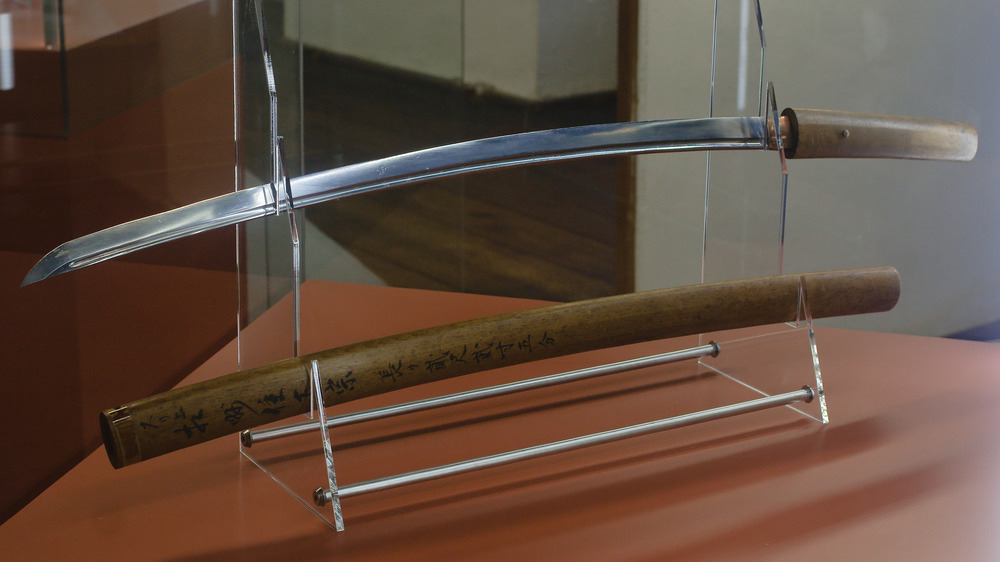The Truth About Japan's Last Living Swordsmiths
The symbolic relevance of the sword, as the chief signifier of a post-Neolithic age defined by nation-states embroiled in centuries of conquest and warfare, cannot be understated. Think of King Arthur and Excalibur, Bilbo and Sting, Arya Stark and Needle, Luke Skywalker and his lightsaber, the Bride from "Kill Bill" (both volumes) and her Hattori Hanzo katana. Legends and pop culture alike paint a picture of our global, ongoing obsession with the meaning and power of ancient, bladed weaponry.
In Japan, swords are mythical precisely because they were removed from the hands of their owners during the Meiji Restoration, on March 28, 1876, during the country's rush to modernize, as Meiji Showa says. Samurai, mercenaries long-since romanticized in countless movies, anime, and video games, could no longer wield the weapon that had been first forged as far back as 700 CE. Per Hiconsumption, legend says that swordsmith Amakuni collected broken blades after battles with Mongolians to analyze why they shattered, and then to forge something indestructible. The very attributes that make those swords (katana) distinctive — soft, single-edged, curved longswords of low-carbon evenly-distributed through a blade folded hundreds of times — come from the tough, iron-rich sand found in Japan, plus endless trial-and-error combined with ongoing technological advancements. It's the impurities that make the katana so strong, at least in the hands of a master, as Shadiversity explains on YouTube.
At present, though? The painstaking, daunting process of crafting katana is known only to Japan's few remaining tōshō (swordsmiths).
A waning industry of meticulous craftsmanship
"Aren't katana beautiful?" swordsmith Yoshindo Yoshihara asks on the Nihon Mono website, speaking of visions of lost eras as much as the construction and aesthetics of swords themselves. He is one of fewer than 200 registered swordsmiths in Japan today. In 1989, Japan Today recounts, there were 300. Swordsmiths are aging, katana-tsukuri (swordsmithing) is becoming more and more opaque, and fewer people are willing to go through the incredibly time-and-cost-intensive barrier to enter the industry.
When speaking of Japanese swords in general, people tend to think of the blades of swords themselves. As Samurai Museum relates, though, the job of building a sword from the ground up includes the nagako (the off-color tang inserted into a hilt), horimono (inscriptions meant to confer blessings or act as signatures), tsuka (hilt with its own decorative designs called menuki), tsuba (handguard at the top of the hilt, with an interior ring called a habaki that protects the blade), saya (the wooden scabbard for the sword), fuchi-kashira (matching fittings that cover the hilt), and maybe even kozuka (a secret dagger slid into the bottom of the hilt). In a year, a modern swordsmith produces only about 10-12 full swords.
Even beyond this process, there are different types of swords beyond katana, with their 60-70-cm blades, as seen on Samurai Museum: tachi (super long 90-100-cm blades), wakizashi (30-60-cm backup blades worn as a pair with katana), and tanto (30-cm daggers).
Prospective swordsmiths face an extreme uphill battle
Modern swordsmiths tend to work and live hermetically. In an extremely traditional fashion, they inherit techniques from a master and continue to create swords according to a specific school of thought, which adds to the difficulties of continuing the craft. Nagano-born Norihiro Miyairi, the youngest swordsmith to earn the mukansa qualification, was considered a "heretic" for breaking with tradition by exploring Sumitani clove patterns on blades, even though he apprenticed with a Bizen school master, he says on Nippon.
Add to this the difficulties of living up to the centuries-old legacy of legendary, often fictionalized swordsmiths and their brands: Muramasa and his cursed sword; Yoshimitsu and his slashing-focused blades; Masamune, the "ancestor of blacksmiths" whose sword Kanze Masamune is housed in the Tokyo National Museum (TNM) as a National Treasure of Japan, as the TNM website says.
On top of this, apprenticeships themselves are typically five years, unpaid, and full-time, as Japan Today says. Few people can afford this, and even fewer finish their apprenticeships, despite a recent increase in applications. Once finished, prospective smiths have to pass a national certification test, offered once a year, that lasts eight days. Finally, the cost of setting up a new business typically runs about ¥10 million ($100,000 dollars).
Modern swordsmiths usually make their money selling restored swords or originals to collectors. Cosplayers, of all groups, have been responsible for an uptick in business in recent years.


